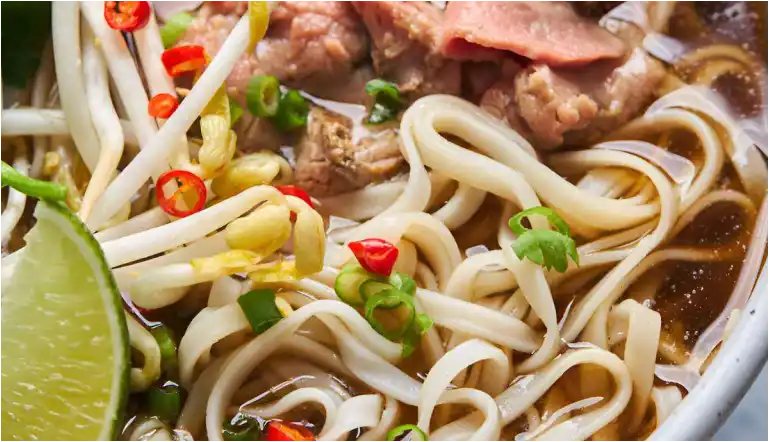For the true pho enthusiast who loves to explore the full range of textures and flavors, learning how to use beef tripe in pho (Pho Sach) is an essential step. Beef tripe, the stomach lining of a cow, is a delicacy in many cultures and is a prized ingredient in a traditional bowl of Vietnamese pho. When prepared correctly, it adds a unique, slightly chewy texture that provides a wonderful contrast to the tender meats and soft noodles in the soup.
Table of Contents
🤔 What is Beef Tripe?
There are different kinds of beef tripe, but the type most commonly used in pho is book tripe, which comes from the third stomach chamber of the cow. It gets its name from its distinctive appearance, which resembles the pages of a book. In its raw form, tripe can be tough and has a strong odor, so it requires careful cleaning and preparation before it is ready to be eaten.
Clean and Tender Tripe
Proper preparation is the key to delicious tripe. Most of the tripe you can buy in Asian supermarkets has already been cleaned and bleached. However, it still needs to be cooked until tender. The best way to do this is to simmer it in water for a long period, often for 2 to 3 hours, until it is soft but still has a slight, pleasant chewiness. It’s important not to overcook it, as it can become mushy. After simmering, it should be shocked in ice water to stop the cooking process and then sliced into thin, bite-sized strips.
🍜 How to Add Tripe to Your Bowl of Pho
Once the tripe is cleaned, cooked, and sliced, it is ready to be added to your pho. Because it is already cooked, you should add it to the bowl at the last minute along with the other toppings. It is a classic ingredient in a ‘Pho Dac Biet,’ or special combination bowl, where it is served alongside other cuts of meat like rare steak, brisket, and tendon. The clean flavor and unique texture of the tripe absorb the aromatic broth and provide a delightful textural surprise in every bite.
More Topics
- Authentic Italian Pizza Recipe: Pizza with Roman Zucchini and Speck
- Authentic Italian Pizza Recipe: Nerano with Zucchini Cream
- Authentic Belarusian Recipe: Pyzy (Meat Dumplings)
- Authentic Belarusian Recipe: Sukhariki (Garlic Croutons)
- Authentic Belarusian Recipe: Rasstegai (Open-Faced Pastry)
- Authentic Belarusian Recipe: Fried Bread Dough (Pyachysta)
- Authentic Belarusian Recipe: Sauerkraut (Kapusta)

